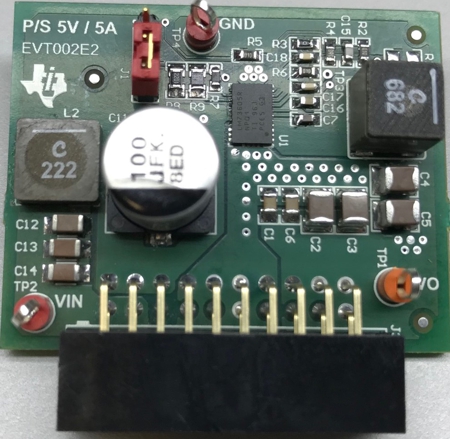TIDUEY6 April 2021
- Description
- Resources
- Features
- Applications
- 5
- 1System Description
- 2System Overview
-
3Hardware, Software, Testing Requirements, and Test Results
- 3.1
Hardware Requirements
- 3.1.1
Hardware Overview
- 3.1.1.1
Control Module
- 3.1.1.1.1
Control Mother Board
- 3.1.1.1.1.1 Inverter Safing - UCC5870 ASC and Fault Control
- 3.1.1.1.1.2 DC-DC Safing
- 3.1.1.1.1.3 DC-DC Converter Secondary PWM Selection
- 3.1.1.1.1.4 Blower Fan Control
- 3.1.1.1.1.5 Voltage Monitor
- 3.1.1.1.1.6 Resolver Interface Control
- 3.1.1.1.1.7 Test Points on Control Module
- 3.1.1.1.1.8 General Purpose Ports
- 3.1.1.1.1.9 Connectors and Headers on Control Mother Board
- 3.1.1.1.2 Power Supplies
- 3.1.1.1.3 TCAN4550 module
- 3.1.1.1.4 Dual TCAN Module
- 3.1.1.1.5 Analog Back End Module
- 3.1.1.1.6 Resolver Analog Front End Module
- 3.1.1.1.1
Control Mother Board
- 3.1.1.2 Inverter Module
- 3.1.1.3 DC-DC Bidirectional Converter Module
- 3.1.1.1
Control Module
- 3.1.1
Hardware Overview
- 3.2 Resource Mapping
- 3.3 Test Setup
- 3.4 Test Results
- 3.1
Hardware Requirements
- 4General Texas Instruments High Voltage Evaluation (TI HV EVM) User Safety Guidelines
- 5Design and Documentation Support
- 6About the Author
3.1.1.1.2.1 Power Supply 5V /5A
This is a compact power brick based on LM73605-Q1. The design is based off LM73605/ LM73606 EVM User Guide. Detailed design information is available in this user guide. The layout of this module is customized to fit the requirements of this EV traction reference design and is shown in Figure 3-12.
 Figure 3-12 Vbat to 5V/ 5A power supply
module
Figure 3-12 Vbat to 5V/ 5A power supply
moduleThis module has a 3 pin jumper J1. If pins 1 and 2 are connected, then it will automatically deliver 5 V as soon as it gets an input supply. Alternately, if pins 2 and 3 are connected, then it is enabled by the logic level of the signal on pin 6 of connector J3. There are two instances of this module used in the reference design and are mounted on 20 pin connectors J20 and J21 of the control mother board. The power brick mounted on J20 will power the control MCU circuits in the mother board and so it should be ON whenever the power is made available to this unit. Therefore its jumper on J1 should connect pins 2 and 3. The component side of this power brick should face diode D7 on the mother board while mounting.
Pin 1 of J1 is facing the board edge
The power brick mounted on J21 will act as an intermediate power stage that helps to power the isolated power supplies for gate drivers and 15 V power supply for resolver. This power supply is designed to be turned ON / OFF by the control and safety MCUs and therefore the jumper on J1 of this brick should connect pins 1 and 2. The component side of this power brick should face diode D7 on the mother board while mounting. It is made available to inverter and resolver modules through connectors J4 and J31 respectively on the mother board.